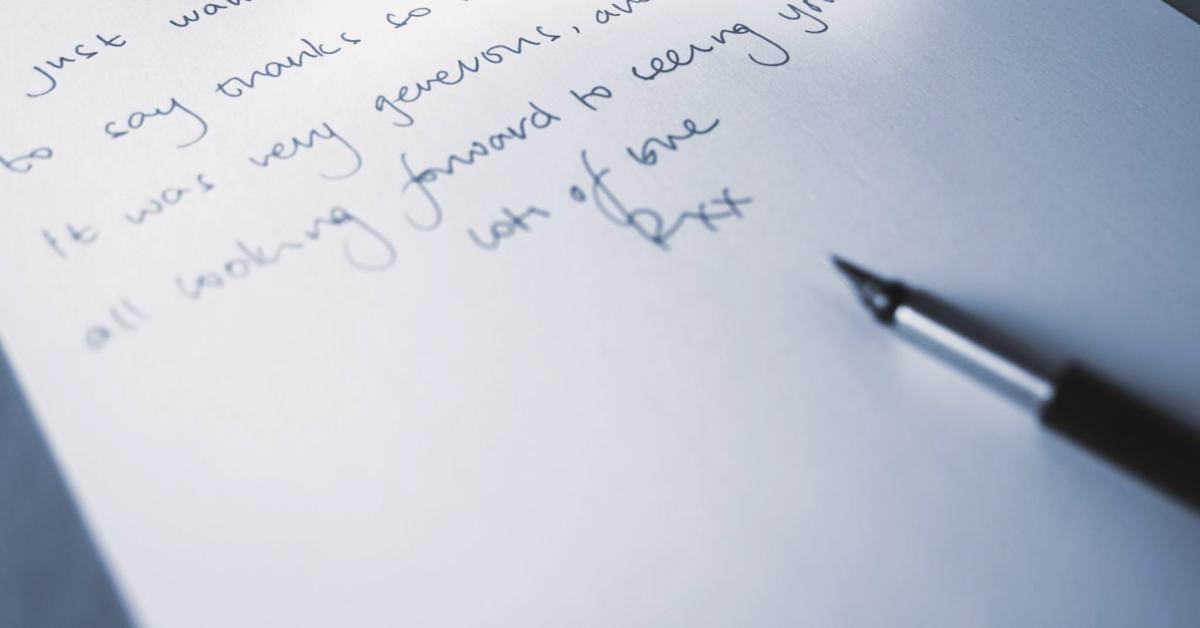What is Line Break in Poetry?

Have you ever wondered how poets create such powerful effects with just a few words?
A secret lies in the strategic placement of line breaks, which can dramatically alter the rhythm and emphasis of their poetry.
This guide will take you through everything you need to know about line breaks, so you’ll be able to understand and even craft your poetic masterpieces.
Unlock the magic behind these pauses; they’re more than mere spaces.
Key Takeaways
- Line breaks in poetry are where one line ends and a new one starts, affecting how we read and feel about the poem.
- There are different types of line breaks like end-stopped lines with punctuation and enjambed lines that run into the next without stopping.
- Using line breaks well can make words or ideas stand out, create smooth flows, or surprise twists in poems.
- Poets use rules and examples to learn how to break lines effectively to create rhythm and tension.
- Famous poems by Lord Byron, Tennyson, and Brontë show great ways to use line breaks for powerful effects.
Understanding Line Breaks in Poetry

The understanding of line breaks in poetry is essential to mastering the art form.
It involves defining line breaks, identifying different types, and recognizing their purpose and function within a poem.
Definition
A line break in poetry is where one line ends and a new one starts.
Think of it as a signal for taking a brief pause, not just with your voice but also with your thoughts.
Poets use these breaks to arrange words on the page, creating rhythm and shaping how we read their work.
This tool helps poets show us which words or phrases are essential. It lets them play with our expectations.
Sometimes, they add punctuation at the end of a line to make us stop; other times, they don’t, so we slide right into the following line.
Line breaks guide us through the poem’s twists and turns, making each reading an adventure.
Types of Line Breaks
Line breaks are where a poet chooses to end one line and start another in a poem.
They help shape how the poem looks, sounds, and feels when read. Here are different ways poets can break lines:
- End-stopped lines: These lines finish with punctuation like a period or comma. This signals the reader to take a pause.
- Enjambed lines: These lines don’t end with punctuation and run into the following line. The idea continues without a break, creating surprise or tension.
- Caesura: This is a pause in the middle of a line, often marked by punctuation like a dash or colon.
- Stanza breaks: Poets also break groups of lines apart. Each group is called a stanza, much like paragraphs in prose.
Purpose and Function
A poetic line break is like a pause or breath when reading a poem. It can make us slow down, think, or feel something vital.
These breaks help shape the rhythm of a poem and show how it should sound out loud. Sometimes, they add surprise by splitting up a thought into two parts.
Line breaks are not just for looks; they have real jobs in poetry. They create tension or give particular focus to certain words at the end of a line.
Breaks also control how fast we read and understand each part of the poem.
They connect ideas from one line to the next, making each little bit powerful its while still being part of the whole poem’s story or feeling.
Mastering Line Breaks in Poetry

Mastering line breaks in poetry involves understanding the impact of enjambment, following rules and guidelines, and studying examples of effective line breaks.
These aspects are essential to creating tension and rhythm within a poem.
Enjambment and Its Impact
Enjambment in poetry is when a sentence or phrase runs from one line to the next without a pause or punctuation.
This technique helps create a sense of continuity and flow, guiding the reader seamlessly through the poem.
By breaking lines unexpectedly, enjambment can also build suspense and surprise in poetry, engaging the reader’s imagination and emotions.
Enjambed lines lack punctuation at their line breaks, allowing for effortless reading and contributing to the melody and structure of poetry.
Enjambment creates a smooth transition through line breaks in written poems and verse, offering poets a tool to experiment with tension and pacing within their work.
Moreover, this poetic device is exclusive to written poems, providing poets with an opportunity to play with language while enhancing the overall artistic impact of their creations.
Rules and Guidelines
After understanding the impact of enjambment in poetry, it’s essential to grasp the rules and guidelines for effectively utilizing line breaks.
Here are some essential rules and guidelines to consider:
- Line breaks should be used judiciously to avoid disrupting the flow of the poem. Poets should assess if breaking a line at a specific point enhances or hinders the overall rhythm and meaning.
- Line breaks should be employed to start a new line when introducing a new idea, speaker, or topic within the poem. This technique helps create emphasis and clarity for readers.
- Formatting guidelines for line breaks exist to ensure the effective use of this poetic technique. These guidelines may include considerations such as line length, white space, and punctuation placement.
- Poets may break phrases or sentences up into more than one line, using line breaks, uncapitalized words, and no punctuation strategically to create a desired effect in the poem. This can help convey pauses, shifts in tone, or build tension within the work.
- Consideration of syllable count, rhyme scheme, and overall structure is crucial when employing line breaks in poetry. The strategic use of shorter or longer lines can impact the poem’s appearance on the page as well as its rhythm and pace.
Examples of Effective Line Breaks
Now that we understand the rules and guidelines for line breaks, let’s look at some examples of how adequate line breaks can impact a poem.
Consider the following lines from Mary Oliver’s “The Summer Day”:
“Tell me, what is it you plan to do
with your one wild and precious life?”
The break after “do” emphasizes the question being asked, encouraging reflection. In Emily Dickinson’s “Hope is the Thing with Feathers,” she writes:
“And sweetest – in the Gale – is heard –”
The break after “sweetest” creates a pause that amplifies the sweetness amid hardship.
Here are a few more good examples of line breaks:
- Emily Dickinson
- “Hope is the thing with feathers — (314)”
- The line break after “feathers” emphasizes the delicate and soaring nature of hope[1].
- “Hope is the thing with feathers — (314)”
- T.S. Eliot
- “April is the cruellest month, breeding”
- The line break after “breeding” creates a pause, intensifying the impact of the statement[3].
- “April is the cruellest month, breeding”
- Langston Hughes
- “What happens to a dream deferred?”
- The line break before the question enhances the contemplative tone, inviting reflection[2].
- “What happens to a dream deferred?”
- Walt Whitman
- “I celebrate myself, and sing myself,”
- The line break after “myself” allows for self-reflection, emphasizing individuality[2].
- “I celebrate myself, and sing myself,”
- Sylvia Plath
- “I am, I am, I am.”
- The repetition with line breaks underscores the urgency and intensity of existence[5].
- “I am, I am, I am.”
These examples illustrate how strategic line breaks can shape meaning and create emotion within a poem.
The Art of Line Breaks in Famous Poems
Explore the use of line breaks in famous poems by Lord Byron, Alfred, Lord Tennyson, and Charlotte Brontë to understand how master poets employ this technique to create powerful and impactful verse.
For more examples and insights into the art of line breaks in poetry, keep reading!
Lord Byron’s “Stanza for Music”
Lord Byron’s “Stanza for Music” is a well-known poem that showcases the art of using line breaks in poetry.
In this piece, Lord Byron skillfully uses line breaks to create a musical and rhythmic effect, enhancing the emotional impact of his words.
This poem serves as an excellent example of how line breaks can be used to manipulate language, creating anticipation and suspense for the reader.
By studying this poem, one can understand how mastering the use of line breaks can elevate the overall poetic experience by evoking powerful emotions and imagery.
The use of line breaks in “Stanza for Music” highlights Lord Byron’s expertise in utilizing them to craft a poignant and evocative piece of writing.
Through his adept manipulation of language and structure, he demonstrates how line breaks can enhance the emotional impact of poetry while creating a sense of anticipation and suspense for the reader.
Alfred, Lord Tennyson’s “The Eagle”
Alfred, Lord Tennyson’s “The Eagle” uses enjambment to convey the soaring flight of the eagle.
The poem’s line breaks allow sentences to flow beyond the end of each line, mirroring the bird’s uninterrupted movement in the sky.
Tennyson skillfully employs this technique to capture the eagle’s freedom and connection to nature, enhancing the sense of majesty associated with this powerful creature.
By using enjambment, Tennyson creates a seamless and continuous narrative that mirrors the fluidity and grace of the eagle’s flight.
This use of line breaks effectively emphasizes the natural imagery while also showcasing how poetry can vividly bring such scenes to life.
Through the clever manipulation of structure and form without being restricted by traditional punctuation or grammatical rules.
Charlotte Brontë’s “Preference”
Moving from the majestic flight of Tennyson’s eagle to the world of Charlotte Brontë, we delve into her preference for simplicity and the everyday.
Her work is known for highlighting the beauty in ordinary life rather than grandeur.
An example of this preference can be seen in her annotations and guidance on how her books should appear.
This reflects a conscious effort to maintain an unadorned nature in her work, which aligns with Newton’s preference for equable quantities and absolute time.
Brontë’s deliberate choice echoes Emily Brontë’s delight in showcasing Keeper, her dog, as it underscores a fondness for the familiar and homely aspects of life.
These preferences emphasize that even within literature, there exists a celebration of simplicity and everyday charm that resonates with readers seeking authentic portrayals of life’s experiences.
Conclusion
In conclusion, mastering the art of line breaks in poetry is pivotal.
Understanding how to read a line break and its impact on rhythm and meaning is crucial for interpreting poetry effectively.
Line breaks can create emphasis, pause, and tension within a poem, adding depth and nuance.
Aspiring poets should experiment with line breaks to convey emotions skillfully and enhance the visual and auditory interest of their work.
Ultimately, the deliberate placement of line breaks is an essential element in crafting compelling and impactful poetry.
FAQs
1. What is a line break in poetry?
A line break in poetry is where a poet decides to end one line and start another, creating rhythm, and tension, or highlighting important words.
2. Why do poets use line breaks?
Poets use line breaks to help create the shape of the poem on the page, influence how a poem should be read, and build feelings in their writing.
3. Can you give me an example of how to break a line?
Sure! If you have a phrase like “the sun sets slowly,” you could break it after “sun” so “sets slowly” starts on the next line. This makes readers think more about each part.
4. How does breaking lines change a poem’s look?
Breaking lines can make your poem appear different on the page; some poets write shorter lines that make tall poems while others use long lines for wider poems.
5. Are there rules for using line breaks in free verse poetry?
Free verse poetry doesn’t follow strict rules – you can experiment with where to place your pauses and how long each single unit of your poem should be!
6. What if I don’t know how often to break lines in my writing?
That’s okay! You can learn by experimenting with breaking lines at different points or taking poetry classes to understand different methods like employing enjambment which means continuing a thought without pausing at the end of a line.


